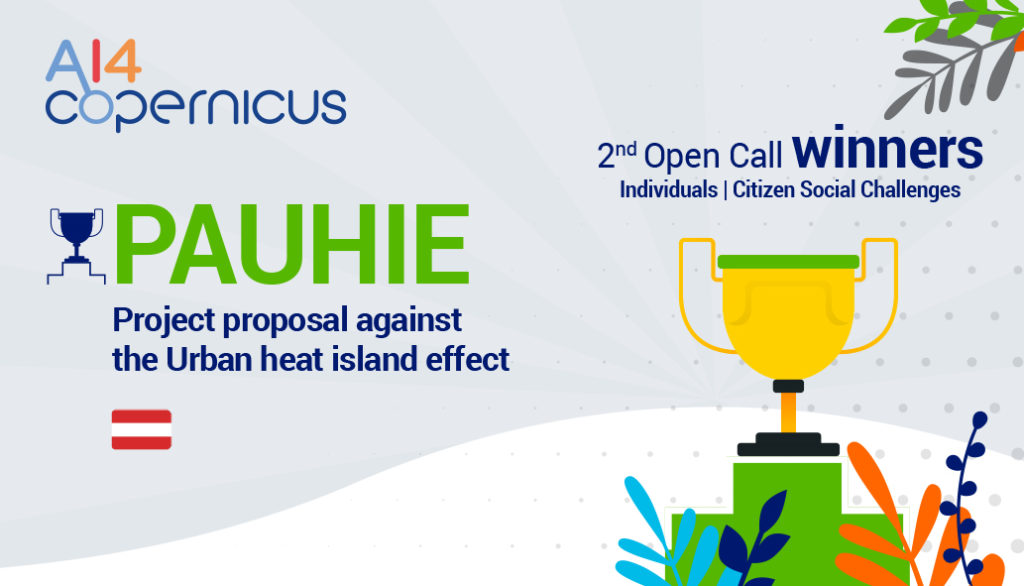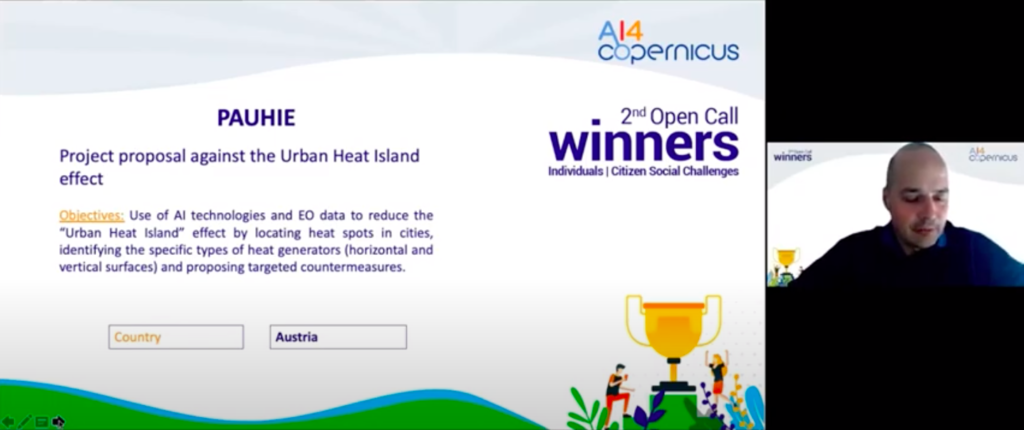PAUHIE – Project proposal against the Urban heat island effect
Winning project from the 2nd Open Call funded by the AI4Copernicus Project
Country: Austria

An interview with the winners – Georg Breitenberger, representing the PAUHIE project

Q: What led to the creation of your idea? What was your motive?
A: The idea came about through my profession. I’m developing 3D printing technology for the construction industry, and I thought about how 3D printing can solve problems of our time. One of these big problems is the Urban Heat Island Effect, which has significant adverse health effects on city dwellers. When I developed my first facade product, how could I best localise such heat islands in the city? In doing so, I came across the Copernicus Earth Observation Program.
Q: In case your idea is implemented, which do you think would be its societal impact?
A: From space, we can only understand the extent and phenomena in today’s megacities. I think that the use of earth observation data will significantly contribute to the localisation of heat islands and their reduction. That will enable us to take targeted measures in the future to reduce heat islands and make life in cities more liveable and comfortable.
Q: Following the recent award, how do you plan to further develop your idea?
A:I am building a company in this field to develop my ideas further. In the future, I will apply for future Copernicus calls.


Abstract of the project: Because of rapid climate change and the densification of the urban structure, the overheating of urban spaces, known as the “Urban Heat Island” (UHI) effect, is a significant problem in many cities. In the past, urban densification was often accompanied by increasing sealing. Therefore, urban space heats up. Because of the compactness and increased building density, the heat locked in the urban canyons keeps temperatures high even during the night. As a result, residents depend on cooling and cannot relax at night. That creates significant health problems. This project proposal shows a possible solution to this important problem. Artificial Intelligence (AI) technologies and Earth Observation (EO) data can help to reduce the UHI effect by locating heat spots in cities, identifying the specific types of heat generators (horizontal- and vertical surfaces) and proposing targeted countermeasures. With the help of 3D printing, we can produce new components with a function like a self-shading facade.

